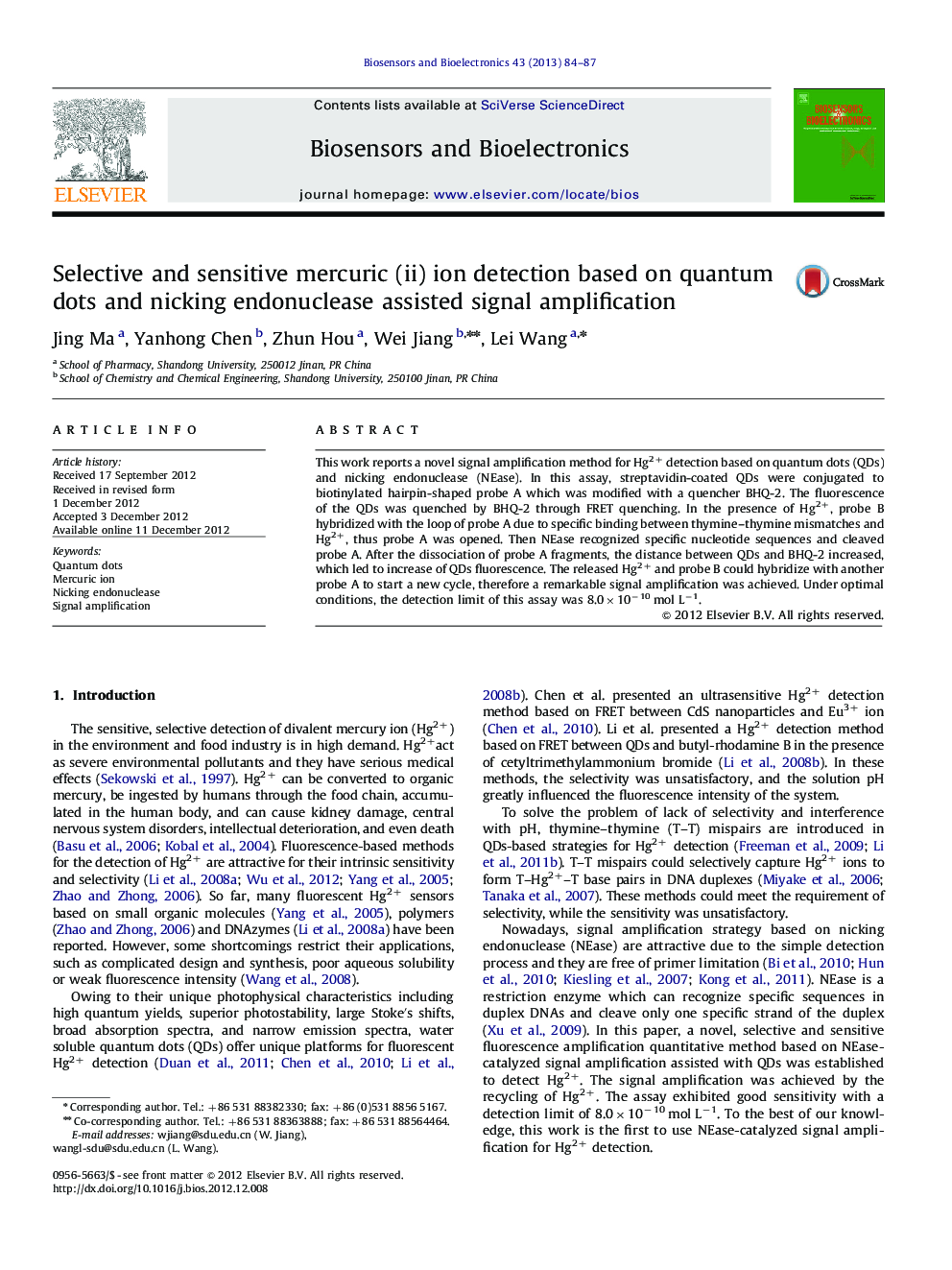| Article ID | Journal | Published Year | Pages | File Type |
|---|---|---|---|---|
| 866831 | Biosensors and Bioelectronics | 2013 | 4 Pages |
This work reports a novel signal amplification method for Hg2+ detection based on quantum dots (QDs) and nicking endonuclease (NEase). In this assay, streptavidin-coated QDs were conjugated to biotinylated hairpin-shaped probe A which was modified with a quencher BHQ-2. The fluorescence of the QDs was quenched by BHQ-2 through FRET quenching. In the presence of Hg2+, probe B hybridized with the loop of probe A due to specific binding between thymine–thymine mismatches and Hg2+, thus probe A was opened. Then NEase recognized specific nucleotide sequences and cleaved probe A. After the dissociation of probe A fragments, the distance between QDs and BHQ-2 increased, which led to increase of QDs fluorescence. The released Hg2+ and probe B could hybridize with another probe A to start a new cycle, therefore a remarkable signal amplification was achieved. Under optimal conditions, the detection limit of this assay was 8.0×10−10 mol L−1.
► A signal amplification method based on QDs and NEase was developed to detect Hg2+. ► The assay exhibited good sensitivity with a detection limit of 8.0×10−10 mol L−1. ► The assay exhibited good selectivity due to Hg2+ and T–T mismatch specific binding.
